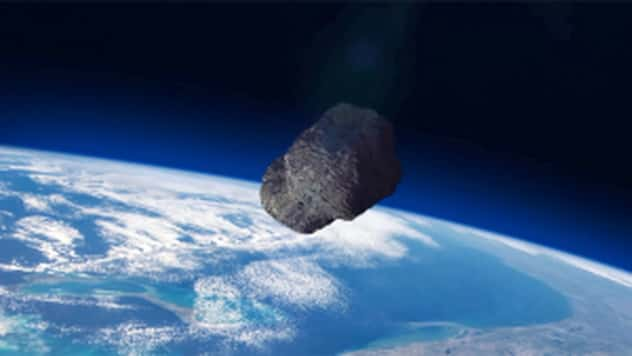A crater on the floor of the North Atlantic is thought to have been created around 66 million years ago, putting it at roughly the same timeframe as another asteroid that collided with Earth.
Sponsored Content
Aug. 18 (UPI) -- Scientists now believe more than one asteroid could have impacted Earth, contributing to the extinction of dinosaurs, according to new research.
Researchers discovered evidence of an asteroid impact crater on the floor of the North Atlantic Ocean, outlined in the journal Science Advances on Wednesday.
Named the Nadi Crater after a nearby underwater mountain or seamount, the site is located around 250 miles off the coast of Guinea in West Africa. The crater is buried up to 1,300 feet below the seabed.
If confirmed, it would become one of less than 20 positively identified known marine impact craters on Earth.
Scientists believe the crater was created around 66 million years ago, putting it roughly at the same timeframe as the Chicxulub asteroid, which collided with Earth off the coast of what is now Mexico's Yucatan Peninsula.
Scientists now believe more than one asteroid could have impacted Earth around the same time, contributing to the extinction of dinosaurs, according to new research published on Wednesday, Aug. 17, 2022. (UPI Photo/John Angelillo)
The impact of the Chicxulub asteroid is believed to be what caused the mass extinction of the dinosaurs.
Now, the Nadir Crater opens up the possibility of more than one impact contributing to the end of that era. Researchers believe the crater may have been formed by the breakup of a larger asteroid or by a collection of smaller asteroids.
"This would have generated a tsunami over 3,000 feet high, as well as an earthquake of more than magnitude 6.5," said study co-author Veronica Bray, a research scientist in the University of Arizona Lunar and Planetary Laboratory.
The impact of the Chicxulub asteroid is believed to be what caused the mass extinction of the dinosaurs. But scientists now believe more than one asteroid could have impacted Earth 66 million years ago, contributing to the extinction of dinosaurs, according to new research published on Aug. 17, 2022. (File photo courtesy of NASA)
"Although it is a lot smaller than the global cataclysm of the Chicxulub impact, Nadir will have contributed significantly to the local devastation. And if we have found one 'sibling' to Chicxulub, it opens the question: Are there others?"
Her co-author agrees.
"The Nadir Crater is an incredibly exciting discovery of a second impact close in time to the Cretaceous-Paleogene extinction," said Sean Gulick, an impact expert at the University of Texas at Austin.
"While much smaller than the extinction causing Chicxulub impactor, its very existence requires us to investigate the possibility of an impact cluster in the latest Cretaceous."
MORE TO EXPLORE:








No comments:
Post a Comment